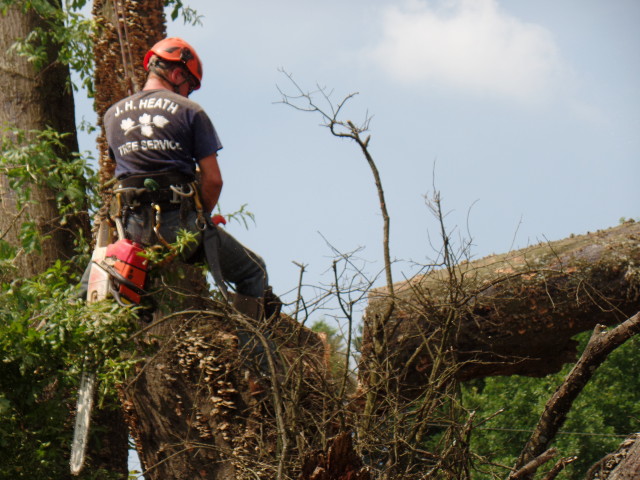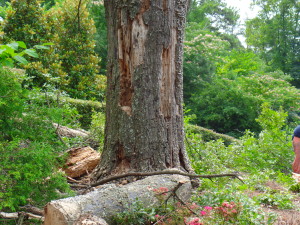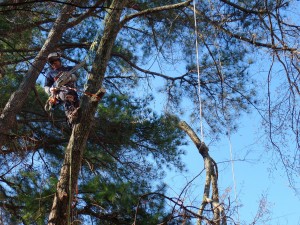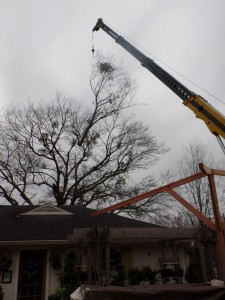Hazardous Tree Removal
By Hillary HeathRemovalComments are offA dead or declining tree on your property is not only an eyesore, but it can also become a hazard to your property.
Rainy summer months with strong winds and storms can cause your dead or declining tree to break apart or fail, leaving your home and property at risk.
A hazardous tree is easy to identify, first determine if your tree has any of these issues:
- Does it have a cavity in the trunk or main stem? If there are any holes in the trunk, the main stem or at the root flair this is cause for concern.
- Root rot? Look for branch die-back, white or bleached looking wood, deformed bark at the base and trunk, discoloration of needles or leaves, and excess resin in conifers.
- Fungal growth around the base? Mushroom conks? Check the base of the tree and the trunk for fungal and mushroom growth. This may be a sign of fungal growth.
- Multiple stems with weak crotch areas? A tree’s natural form is tall and straight with one stem, trees with multiple stems with v-shaped attachments are more likely to split and fall.
- Does it have a severe lean? Trees that lean and have a large amount of foliage on one side run the risk of falling and uprooting during a storm.
- Root zone impacted by drought or construction? Compacting the soil on top of the root zone can kill the roots of the tree. The roots are the anchor that hold the tree in the ground. The “root zone” extends a few feet past the spread of the canopy.
If your tree is a hazard it should be removed by a trained and certified arborist. Hazardous dead trees are typically a higher-risk removal and should only be handled by a professional. ISA Certified Arborist are experts in difficult removals.
There are several tree removal techniques an arborist may choose to use, but the most common are traditional roping and rigging and crane removal.
Traditional tree removal is a more common practice for removing a dead or declining tree. This technique requires the tree to be safe enough for a tree climber to ascend the tree. A climber will work his way up the tree removing branches on the way.
Crane removal is used when the tree must be lifted over a house or other large structure or is too large to remove from its location. A crane removal may also be necessary if the tree is no longer safe to climb.




